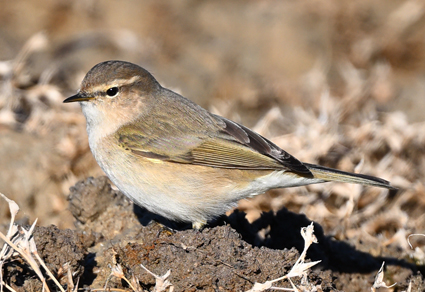albertonykus
Well-known member
Wu, L., J. Dang, L. Tang, Y. Cheng, G. Song, Y. Sun, J. Martens, M. Päckert, P. Alström, D. Zhang, C. Jia, and F. Lei (2023)
Limited song-mixing without genomic gene flow in a contact zone between two songbird species
Molecular Biology and Evolution (advance online publication)
doi: 10.1093/molbev/msad053
Song is considered to play an important role in the maintenance of prezygotic reproductive isolation between closely related songbird species. Therefore, song-mixing in a contact zone between closely related species is often considered as evidence of hybridization. The Sichuan Leaf Warbler Phylloscopus forresti and the Gansu Leaf Warbler P. kansuensis, which diverged two million years ago, have formed a contact zone in the south of the Gansu Province of China, where mixed-songs have been observed. In this study, we investigated the potential causes and consequences of song-mixing by integrating bioacoustic, morphological, mitochondrial, and genomic data with field ecological observations. We found that the two species display no apparent morphological differences, while their songs differ dramatically. We demonstrated that approximately 11% of the males in the contact zone sang mixed-songs. Two males singing mixed-song were genotyped, and both were found to be P. kansuensis. Despite the presence of mixed-singers, population genomic analyses detected no signs of recent gene flow between the two species, although two possible cases of mitochondrial introgression were identified. We conclude that the rather limited song-mixing does not lead to, or result from, hybridization, and hence does not result in the breakdown of reproductive barriers between these cryptic species.
Limited song-mixing without genomic gene flow in a contact zone between two songbird species
Molecular Biology and Evolution (advance online publication)
doi: 10.1093/molbev/msad053
Song is considered to play an important role in the maintenance of prezygotic reproductive isolation between closely related songbird species. Therefore, song-mixing in a contact zone between closely related species is often considered as evidence of hybridization. The Sichuan Leaf Warbler Phylloscopus forresti and the Gansu Leaf Warbler P. kansuensis, which diverged two million years ago, have formed a contact zone in the south of the Gansu Province of China, where mixed-songs have been observed. In this study, we investigated the potential causes and consequences of song-mixing by integrating bioacoustic, morphological, mitochondrial, and genomic data with field ecological observations. We found that the two species display no apparent morphological differences, while their songs differ dramatically. We demonstrated that approximately 11% of the males in the contact zone sang mixed-songs. Two males singing mixed-song were genotyped, and both were found to be P. kansuensis. Despite the presence of mixed-singers, population genomic analyses detected no signs of recent gene flow between the two species, although two possible cases of mitochondrial introgression were identified. We conclude that the rather limited song-mixing does not lead to, or result from, hybridization, and hence does not result in the breakdown of reproductive barriers between these cryptic species.










